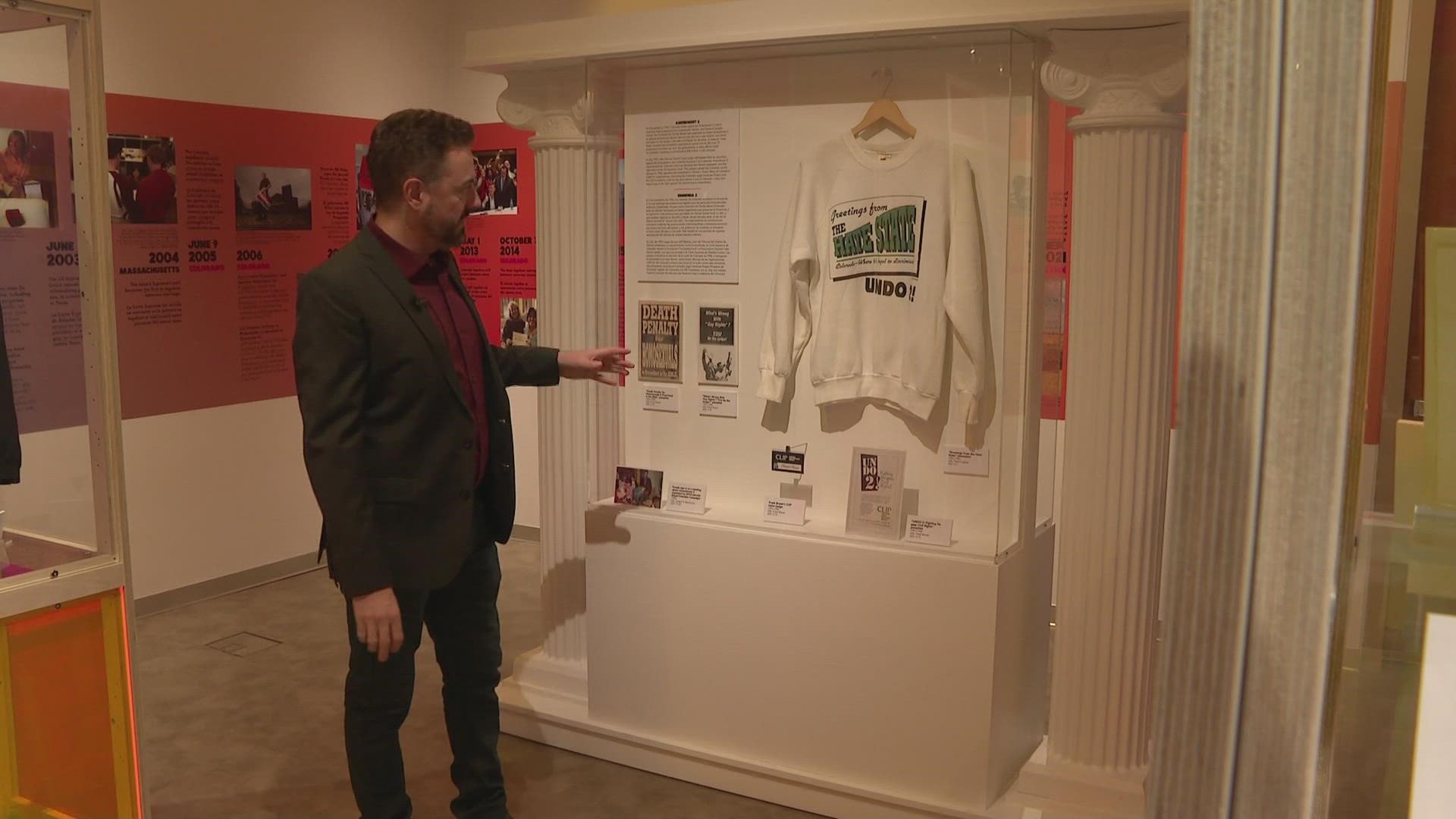DENVER — As survivors of the Club Q shooting testified before Congress on Wednesday about the harmful impacts of the recent rise in LGBTQ+ hate crimes, it was a reminder that Colorado's history with the LGBTQ+ community has not always been positive.
Rainbows and Revolutions, an exhibit inside History Colorado, highlights the good and the bad of the state's LGBTQ+ history.
9NEWS spoke to Aaron Marcus, the Gill Foundation's associate curator of LGBTQ+ history and the person behind the exhibit.
(Editor’s note: This interview has been edited for context and clarity.)
9NEWS: Is this a new position for History Colorado?
Marcus: It is the first of its kind. As far as I’m aware it’s the first time that a state institution in the United States has had this position.
What made you take on this role?
Marcus: The reason why I wanted to take this position to be the curator of LGBTQ+ history is -- I’ve been at History Colorado since 2008 in some form. It is very important history a lot of people aren’t aware of, and honestly, I know this will sound corny, but it means the world to me.
On the very first day we opened, which was June 4, a 12-year-old kid wanted to see it so bad, their grandmother brought them and their younger siblings here to see it. That made my day that children are interested in it and want to see it. And maybe they will see themselves in this and not feel alone.
I remember the first time I went to a gay bar. It was mind-blowing that all these people in this bar were like -- I mean, to put it frankly, you know you’re not alone. There is a community there.
What word would you use to describe Colorado's LGBTQ+ history?
Marcus: The first thing that comes to mind is "groundbreaking," because so many things did happen here in Colorado. Once the Stonewall Riots happened, which a lot of people consider the start of the modern gay rights movement, people were fighting for rights long before then. The Stonewall brought that to a front.
Well, then, here in Colorado and in Denver, that spurred on other people to start Big Mamma Rag, a woman-to-woman feminist center, and from that, we had Colorado’s Stonewall moment, which was the revolt on city council in October 1973. Dynamic, groundbreaking are some of the words I would use.
Is it safe to say this exhibit highlights the good and bad of Colorado's LGBTQ+ history?
Marcus: Oh definitely, and that’s one thing in this community, as you said, there’s been good and bad, and this exhibition will show you that. I don't want to sound negative at all, but it's almost soul-crushing when you see this history that is cyclical. You can see that here. Like one step forward two steps back.
You can actually see that history in this space. So then to see what’s going on in the country right now or, for instance, at the Club Q shooting, it is almost soul-crushing when you see that, because people aren’t learning from their history. I would love for them to come here and see the history.
After Club Q, did walking into this space feel different?
Marcus: Oh, definitely. Something like that happened in our state, no less. I wish it didn’t happen. To see it happen again, oh, I can’t even tell you, when I saw that, it was so emotional.
When something happens like at Club Q in Colorado Springs, it does show that this work is important. It is definitely not finished. I mean, we have so far to go. Yes, I’ve done a lot in two and a half years here, but there is so much more to do and there are so many more voices to get into our permanent collection here at History Colorado.
I want to work that into the exhibition somehow and acknowledge what happened so more people will know about it.
Why is it still important for people to know Colorado's LGBTQ+ history?
Marcus: It's important to know our history and history in general. I'm a history major. Undergrad, grad school. So for me, I've just always loved history. But for people, it is important for people to know their history. For instance, in 1978 there was what was called the trans coalition which staged a protest because two trans women of color were killed by the police. If you go over there and look at that and just take off the date, 1978, and put 2022, that’s today’s date and that’s why it is so important to know our history, and, if anything, see what they did in 1978 and how we can change that to make it even more effective now.
What do you want people to know about this exhibit?
Marcus: This exhibition is not just low points. There are so many good things that happened here. The marriage equality, overturning Amendment 2, right in front here we have Juicyy Misdemeanor’s drag outfit that she wore at Black Pride Colorado. It’s amazing.
There is a lot of good in here. I don’t want to focus on just the bad, but I want people to learn from that and see that once you get past the bad there is good. We just have to keep fighting.
How does it make you feel to walk in here?
Marcus: Happy. It’s that simple. Happy. If you come here and see this exhibition, I feel like, when you walk in you feel like you are part of a larger community.
SUGGESTED VIDEOS: LGBTQ+ Stories

